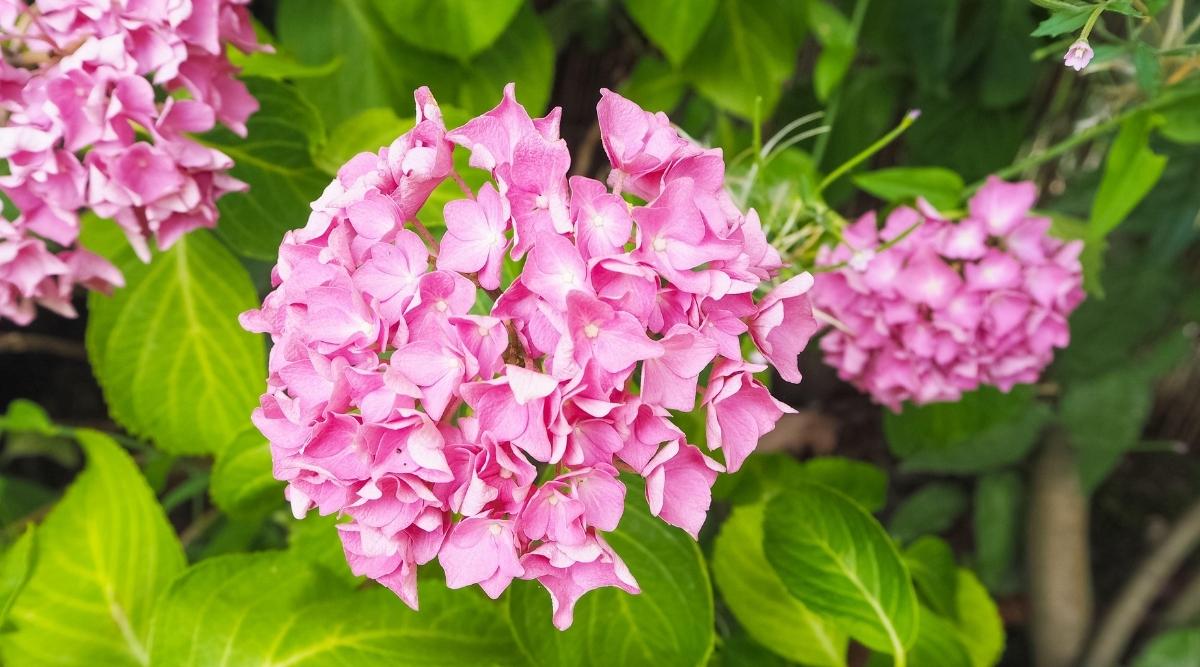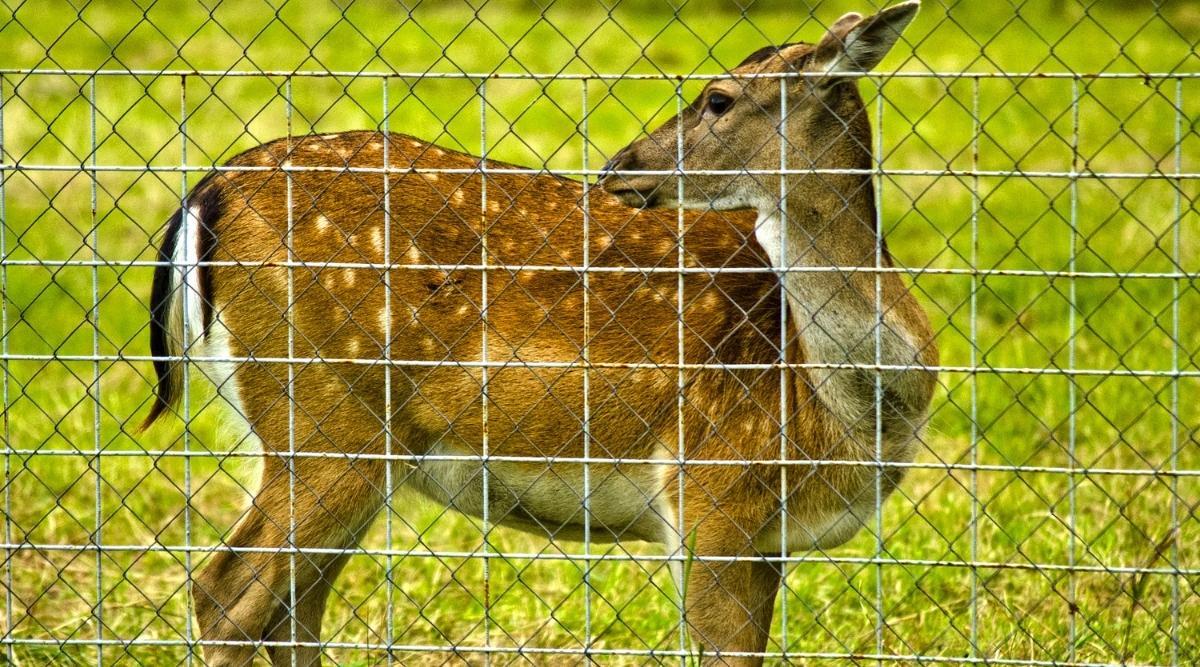Garden Pests
Thinking of adding some hydrangeas , but live in a location that ’s also very populated by cervid ? funny to be intimate if hydrangeas will pull cervid or if they are deer tolerant ? In this clause , gardening expert and hydrangea enthusiast Jill Drago walk through everything you need to know about deer and hydrangeas !
Contents

recall aboutgrowing some hydrangeasthis season , but are n’t indisputable if they are pass toattract deer to your G , or forbid them from coming around?Unfortunately the result here is n’t really all that mere . Several divisor will run into this , include thevariety of hydrangea , and your geographic location .
Gardening with deer can be a challenge . It ’s even harder if you experience in an country where deer are overpopulated , and seem to roam freely . But there are ways of gardening with them hang around , while still keeping them felicitous , and hold our own felicity in the garden .
So , if you ’d wish to learn a fiddling more about hydrangeas and deer , you ’ve come to the right post ! Let ’s jump in and take the air through what you could expect from the cervid in your area if you decide to plant some hydrangeas in your garden this season .

The Short Answer
This answer is not as cut and teetotal as you were belike hoping for . hydrangea are not deer resistant . Deer will most likely exit the leaves of your hydrangea alone , the exception to this rule is theoakleaf hydrangea . However , deerhave been known to clear all of the flower buds off of a hydrangea works .
About Hydrangeas
Hydrangeas are a grouping of blossoming shrub that are well known and sleep together for their bountiful blossom . There aresix different speciesthat are popular in garden today : anomala , arborescens , macrophylla , paniculata , quercifolia andserrata . Each of these coinage is dissimilar in its own right , but they all have many similarities as well .
Hydrangeasthrive in partial shadeandwell draining soil . The only exception to this rule isHydrangea paniculatawhich is considered asun friendly varietythat need at least 6 hours of sun or more .
Each mintage feature a dissimilar case of flower , the most democratic being a mophead . Hydrangeas are grow for their beautiful blooming , and the paint to hold open those flowers coming is to verify you arepruning them at the right clip .

It will only take about one full growing time of year for your hydrangea to instal after planting . Once it has made itself athome wateringand other maintenance will be minimum .
Will Deer Actually Eat Hydrangeas?
Deer will utterly munch on the efflorescence buds and leaves of your hydrangea plants . It is prettyeasy to fleck cervid damageon your plant just by look at the leafage .
When the deer eat your hydrangea they will pull and tear at the leafage which will leave a shredded looking from the watering of the leaves . cervid are more attracted to young hydrangea , likely because more of the plant is palatable to them . Older hydrangeas that get nibbled on tend to bemore live to cervid damageand will number back strong .
Do Hydrangeas Attract Deer?
I often touch on to garden as salad bars for wildlife . Plants such ashostas , ivy , and vegetables growing in your garden can attract deer .
Unless it is the dead of wintertime and the cervid are have trouble determine anything to munch on , hydrangea themselves will not attract deer into your garden . But again , if you have surrounded them with Funka or other scrumptious plant there is a unspoilt chance that the deer will begin to nibble on your hydrangea as well .
Deer Deterrents
So , now that you know hydrangea can be eat by cervid , even if it ’s not an attractant , it ’s time to learn about some of the most common deterrents . There are several different ways you may dissuade cervid from making their way to your hydrangeas , and some are easier to use than others . Let ’s take a feel .
Physical Barrier
Over the wintertime it is a smart idea towrap your hydrangea gently with burlapto protect your plants from being piece . If you survive in an orbit with a large cervid population , this will be an especially in force idea since their food source may become scarce at this time .
While wrapping your plant , be patrician and avoid making too much contact with the plant itself , this will serve to keep all of those cherished buds dependable from impairment . You may need to utilise a few industrial plant stakes around the plant life to help with this .
During the growing season you canuse a deer nettoprotect your plants . These net are calamitous and nearly unseeable so they will not distract from the smasher of your hydrangeas . These nets will also work for other critter such as bird and rodent such as squirrel and chipmunks . This type of netting is simple enough to twine around individual plant .

Other Deer Resistant Plants
There really are not any “ cervid resistant ” plant life . If deer are thirsty enough they will eat just about anything . However there are a fewtypes of plant that they run to avoidif they can help it , and there arequite a few popular deer tolerant perennials .
cervid do n’t like the grain of the plants ’ fuzzy foliage . lesson of “ bleary plants ” are lambs ear or yarrow .
This one is a no brainer , no one wants to eat on something incisive right ? instance of plants with spikes are genus Echinops ( orglobe thistle ) or sea holly .

Here we are talking about plant that have fragrant foliage , not flower . The aroma from these plants can become puzzling for the deer . Examples of fragrant works are catmint , bee balm , or russian salvia .
They are n’t peculiarly adoring of nibble on ornamental grass . They may nibble on your lush lawn , but the cosmetic Mary Jane do n’t allow for the cervid with enough sustenance and they will typically pass on these plants .
Deterrent Sprays
impediment sprays are an excellent choice forkeeping the deer off from your hydrangea . These spray work by cover the plant in a taste or an odor or a compounding of both that is unpleasant .
The only downside to these plant is you have to spray them repeatedly , and sometimes they can be quite unpleasant-smelling even to us humans . However , they do n’t ache the cervid and will simply just keep them away from your plants .
There are many deterrent products available at garden pith , however I have had winner with Liquid Fence . Whichever merchandise you choose to employ , be sure tofollow the label instructionsas far as an diligence rate goes . Because these spray are good for the plant , it is ordinarily a good idea to think about spray your plants once a week , and again if it rain down !

Plant in Containers
If you have a gamey deer universe in your field and just ca n’t populate without your hydrangeas , plant them in pots is a great agency to enjoy the beauty of the plant without having to worry about them .
Container plant hydrangeasshould be situate up on a deck or a patio where cervid can not reach them . apparently leaving them at ground level in your garden will do as much proficient as really planting them in the same place . But at least with container , you have the option of moving them around .
It ’s possible to overwinter potted hydrangeas outside . However , if you are dealing with a deer job I would extremely suggest displace them into your garage to avoid the flowerbuds of your hydrangea from being eaten .

Final thoughts
If you experience in an area with a cloggy cervid universe it will just take a little bit of critical mentation to design your garden . Do n’t deprive yourself ofbeautiful hydrangea bloomsbecause you are afraid of cervid eating them ! Usingfencing or check sprayscan service . Be patient and do n’t forget that you are also playing in the cervid ’s home , so examine to be kind ! institute other plants around your hydrangea is a outstanding way to keep the deer at bay , and will redirect them to another spot to get their food .
